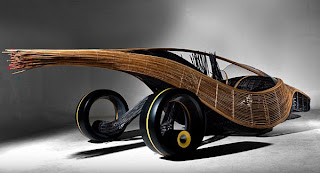As I browse a social networking site, I stumbled upon this unique concept of a hotel in Sweden that a friend has mentioned to me. The Treehotel allows you to live among the trees and birds, in harmony with nature. The concept is based on respecting the natural environment and to minimise disruption in both physically and visually. Local, sustainable materials such as wood is used in constructing the hotel. The tree houses use freezer toilets that freeze waste for later removal and "cinderellas", which incinerate waste in internal combustion chamber. This plumbing system is proven efficient, “The incinerators are perfectly safe and very efficient... One person using it every day for a year would only produce one single cup of ash residue.” said Anette Selberg, the hotel's marketing director.
Would you want to stay here?
| The Bird's Nest : Discreet windows are hidden with branches. Access is by a retractable staircase. |
Want to see more? http://www.treehotel.se/
New Zealand has a similar design concept found in the Redwoods Treehouse, which holds a restaurant on a tree located near Warkworth north of Auckland. Access to the Treehouse is provided by an elevated tree-top walkway. Parts of the walkway are built using redwood milled on site. The vertical fins and slats are built from sustainably grown pine and poplar. Due to the complicated legislation system created by the RMA (Resource Management Act) 1991, the treehouse is currently closed until a resource consent is granted.




